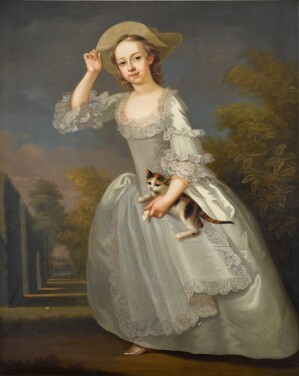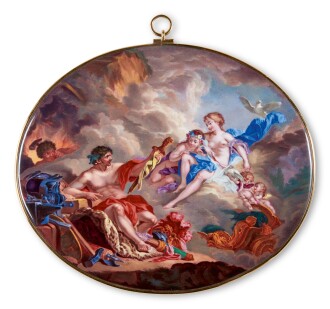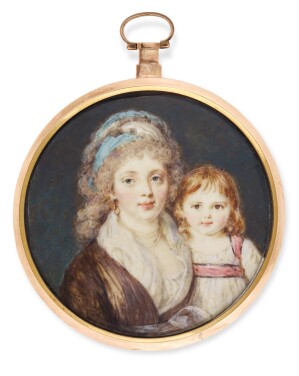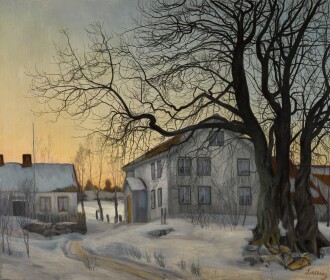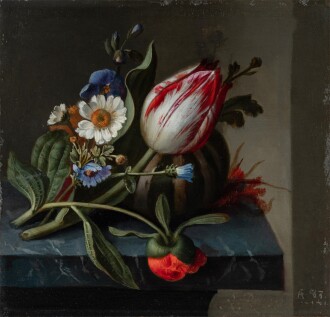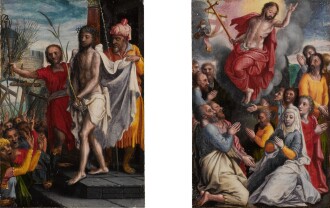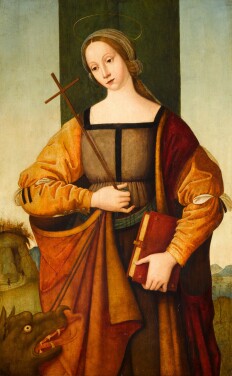I n this winter season’s Old Masters Day Sale we are delighted to present a rich and wide variety of paintings, from early Italian and Spanish gold grounds, to works from the Flemish and Dutch Golden Ages, theatrical Baroque paintings, and elegant portraits and view paintings from the 18th and early 19th centuries. Highlights of this auction include a recently conserved portrait attributed to Frans Hals, a mid-15th century Sienese gold ground and striking Saint Bartholomew by Luca Giordano from a European private collection, and property from the collections of the late Sir Peter Jonas and the Barge-Dreesmann family.
Auction Highlights

Sotheby's are delighted to present 130 portrait miniatures from the celebrated Pohl-Ströher collection. This sale includes fine examples by many of the great painters of the field from the 17th to the 19th centuries.

As befits an auction held in December, the Old Master Evening and Day Sales both offer a fine selection of Winter Landscapes. This genre of painting originated in 15th-century Books of Hours in depictions of the months of the year, though it did not become an independent subject until the 17th century. Pieter Bruegel the Elder paved the way for such works with his iconic Hunters in the Snow of 1565 (Kunsthistorisches Museum, Vienna), and the development and popularity of depictions of The Four Seasons, led directly to works such as the set by Sebastiaan Vrancx in this sale. Winter in The Netherlands, and the activities and games on frozen canals that came with the season, served as an obvious source of inspiration to Dutch artists and their preoccupation with representations of weather, light and temperature.
Day Sale
Evening Sale

This choice collection of Dutch Golden Age paintings includes works by some of the most famous artists, and of some of the most representative subjects, of the period. It comprises works by two of the foremost landscapists of the era: Jan van Goyen and his teacher Esaias van de Velde, whose paintings here mainly represent summer and winter landscapes, as well as the leading still-life specialist: Pieter Claesz., the inventor and most highly-regarded proponent of monochrome ‘breakfast pieces’. The collection also includes works by Rachel Ruysch, the first female Netherlandish artist to win international recognition during her own lifetime through her depictions of flowers and Flemish works by brothers Jan Brueghel the Elder and Pieter Brueghel the Younger.
Day Sale
Evening Sale

We are delighted to offer property from the collection of the legendary, late Sir Peter Jonas (1946-2020), former director of English National Opera and the Bavarian State Opera, whose passion for Old Master Paintings led him to collect works over a period of twenty-five years.

Sometimes the back of a painting can tell us as much, or even more, as the painted surface. In the case of this typical and charming painting by Philips Wouwerman, the Dutch Golden Age painter who specialised in landscapes and hunting and battle scenes, the reverse of the panel holds the clues to the previous ownership of the work, which includes none other than Count Heinrich von Brühl and Catherine the Great of Russia, from whose collection the picture passed into the galleries of the State Hermitage Museum in St Petersburg.


Count Heinrich von Brühl (1700-63) was chancellor and confidant to Augustus III, King of Poland, and his proximity to the monarch, coupled with his political ambition, led to him becoming the de facto head of the Saxon court. Brühl owned a vast military and ceremonial collection of objects and vestments, as well as the largest collection of Meissen porcelain in the world. His gallery of paintings eclipsed even these other treasures, however, rivalling the royal collection itself.
The red wax seal in the upper left displays the Heineken coat-of-arms: Carl Heinrich von Heineke (1707-91) became the private secretary and librarian for Count Heinrich von Brühl in 1739, and from 1746 he was director of the Royal Collection of prints and drawings at Dresden, until Brühl's death in 1763. His seal here demonstrates that he assisted Brühl in the purchase of this work.

Brühl's estate was sold en bloc to Catherine the Great of Russia (1729-96) in 1768, negotiated by her agent Andre Belloselsky. The collection numbered over 600 paintings, many of which - including works by Rubens, Rembrandt, Poussin and Bellotto - are still held at the State Hermitage in St Petersburg. This picture would have hung in the Winter Palace as part of Catherine's collection, until her death in 1796.
The red wax seal in the lower left bears the Cyrillic monogram of Pavel Petrovich, Tsar Paul I (1754-1801), son of Catherine the Great. Its presence indicates that this was one of the paintings transferred to one of his estates, probably Gatgina Palace, situated 50 miles south-west of St Petersburg. During Paul I's reign, the Winter Palace ceased to be the private property of the Tsar, and acquired the status of a State Imperial Museum.

The painting is presumed to have moved back to the State Imperial Museum during the reign of Nikolai I Pavlovich (1796-1855), and the black stencil '3276' corresponds to the 1859 inventory of the collection at the Hermitage.

The black crayon 'Kam 1014' [kam = Каталог; catalogue], denotes the catalogue number assigned to the painting from 1885, which it held in the Hermitage inventories until it was sold in 1930.

This painting was one of 59 sold by the Hermitage in 1930, following a decision taken by the Soviet government in 1928, which saw the sale of paintings and drawings intended to supplement the finances of the USSR, largely between 1930 and 1932. The customs stamp faintly visible on the reverse of the painting is from the Bundesdenkmalamt-Wien, indicating that the painting was cleared for export from Austria between 1923 and 1934.










